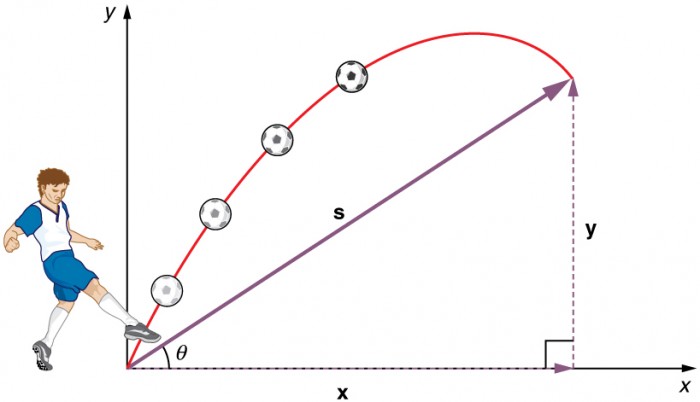
Physics of Projectile Motion
An inrtoduction to Physics of Projectile Motion
Name: Own Teacher
Email: info@ownteacher.com
Created At: 23-10-2023
What Is Projectile?
A projectile is any object thrown into space upon which the only acting force is gravity. The primary force acting on a projectile is gravity. This doesn’t necessarily mean that other forces do not act on it, just that their effect is minimal compared to gravity. The path followed by a projectile is known as a trajectory. A baseball batted or thrown is an example of a projectile.
What Is Projectile Motion?
The physics of projectile motion is a branch of classical mechanics that deals with the motion of objects that are projected into the air and then subject to the force of gravity. Key principles include:
Projectile motion refers to the motion of an object that is thrown or projected into the air, subject only to the acceleration of gravity. The object, known as a projectile, follows a curved path called its trajectory. In introductory physics, projectile motion is typically studied in two dimensions, assuming negligible air resistance. This allows for simplified calculations and accurate approximations.
Properties of Projectile Motion
Projectile motion exhibits several key properties, including:
1. Acceleration due to gravity: The only force acting on a projectile is gravity, which causes it to accelerate downward at a constant rate of approximately 9.8 m/s² on Earth.
2. Range: The range of a projectile is the horizontal distance it travels before hitting the ground. It depends on the initial velocity and launch angle of the projectile.
3. Maximum height: The maximum height reached by a projectile is determined by its initial velocity and launch angle. At the highest point of its trajectory, the vertical component of its velocity becomes zero.
4. Trajectory: The trajectory of a projectile is the curved path it follows through the air. In the absence of air resistance, the trajectory is a parabolic curve.
Solving Projectile Motion Problems
To solve projectile motion problems, the principle of independence of motion is applied. This principle states that the horizontal and vertical motions of a projectile are independent of each other. This allows us to analyze the two dimensions separately and combine the results to obtain a complete description of the projectile's motion.
When solving projectile motion problems, it is important to consider the initial conditions of the projectile, such as its initial velocity, launch angle, and height above the ground. By applying the equations of motion and the principles of kinematics, we can determine various properties of the projectile, such as its position, velocity, and time of flight at different points in its trajectory.
Real-Life Applications
Projectile motion has numerous real-life applications. For example:
Sports: Projectile motion is relevant in sports such as basketball, soccer, baseball, and golf, where players need to accurately project objects (balls) into the air to achieve desired outcomes [2].
Engineering: Understanding projectile motion is crucial in fields like ballistics, aerospace engineering, and artillery design, where the trajectory of projectiles must be carefully calculated for accuracy and safety.
Physics Education: Projectile motion is often used as a practical example to teach concepts of motion, kinematics, and the effects of gravity in introductory physics courses .
Conclusion
Projectile motion is a fundamental concept in physics that describes the motion of objects thrown or projected into the air. By considering the properties of a projectile, such as acceleration due to gravity, range, maximum height, and trajectory, we can analyze and solve problems related to projectile motion. This understanding has practical applications in various fields and is essential for a comprehensive understanding of motion and kinematics.
Frequently Asked Questions – FAQs
Q1.
What is a projectile?
A projectile is any object thrown into space upon which the only acting force is gravity.
Q2.
What is a trajectory?
The curved path through which the projectile travels is known as a trajectory.
Q3.
Define time of flight.
Time of flight is the measurement of the time taken by an object, particle or wave to travel a distance through a medium.
Q4.
Give the time of flight formula?
Q5.
State true or false: the minimum number of coordinates required to completely define the motion of a body determines the dimension of its motion.
True.
Hope you learned projectile motion, time of flight formula, horizontal range, maximum height, and the equation of trajectory. Stay tuned with BYJU’S to learn more about projectile motion and its applications.
Comment List
Leave a Comment.



